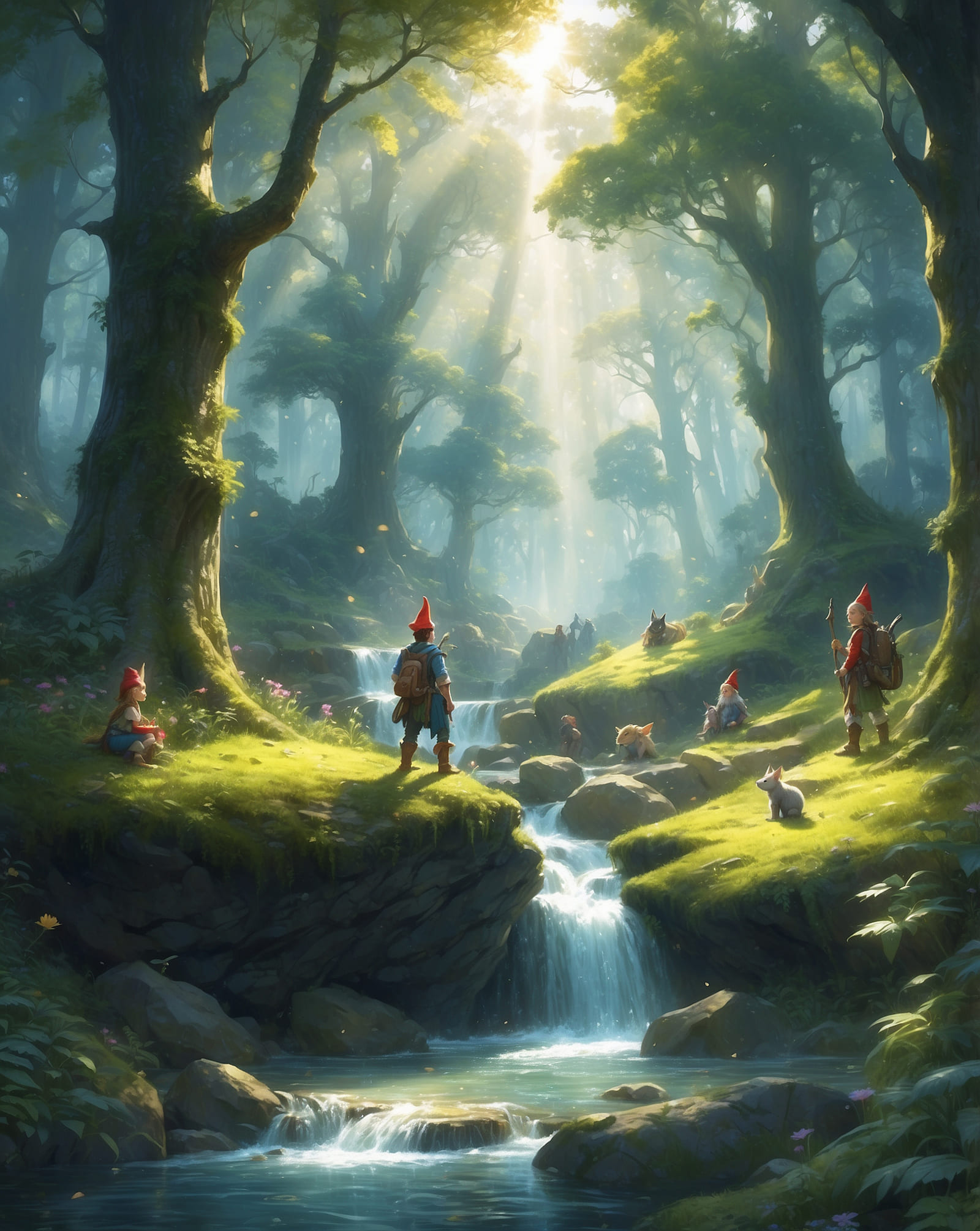Nature spirits
The imagination of nature is inexhaustibly inventive
'The traditional lore of every country in the world testifies to the existence of creatures other than humans that inhabit the different kingdoms of nature. There is great variety in the names given to these creatures, but those we are most familiar with in the West are the elves or pixies, fairies, gnomes, salamanders, sylphs, nymphs or undines and sirens…
The imagination of nature is inexhaustibly inventive, and before creating human beings it must surely have made a great many experiments and produced creatures very different from humans. Esotericists generally agree that there are four major categories of these beings, each category having a particular relationship with one of the four elements: gnomes correspond to earth, nymphs or undines correspond to water, sylphs correspond to air, and salamanders to fire. I shall not say more than a few words about these four categories today; if you want to learn more, you can consult some of the many books on the subject.
Gnomes are tiny beings, quite similar in general appearance to humans: they have arms and legs, a nose, eyes and ears, etc. According to clairvoyants who have seen them, they dress in peculiar clothes and wear little pointed hats, exactly like the hats of the dwarfs in the pictures of 'Snow White and the Seven Dwarfs'. They can go in and out of the ground, even rocks, without the slightest difficulty, for the matter of their bodies is not the same as ours, and the earth offers them no resistance. The element earth predominates: their work is with the riches of the earth; they are the guardians of metals and precious stones, and, in fact, if someone makes friends with them, they sometimes give that person a gift of gold or a precious stone.
Nymphs or undines also resemble human beings. They are a little bigger than gnomes but smaller than humans; most of them are female and extremely beautiful. Their favourite haunts are watery environments: rivers, waterfalls, ponds, lakes, seas and oceans. It seems they are inclined to be more gracious and friendly than gnomes, and indeed they often fall in love with human beings. In fact, men have been known to marry nymphs, but this is a very risky thing to do because they are extremely jealous; they can easily take revenge on an unfaithful husband by strangling or stabbing him.
Sylphs, on the other hand, live mainly in forests and up in the mountains. They are much bigger than humans, their appearance is extremely majestic and they are gifted with great intelligence. Sylphs are the friends of philosophers and thinkers and sometimes become their instructors. They can move about as they please and have the power suddenly to change their face or their size. They work on clouds, fashioning them into all kinds of forms, and those who know how to read these cloud formations learn a great deal from them and can even read the future in them.
It is much more difficult for humans to communicate with salamanders. Only mages and initiates are capable of making friends with them, and thanks to this friendship they can obtain great power and learn to produce fire and release thunderbolts. Salamanders live in fire, for the matter of which they are composed consists principally of igneous particles...'
'The traditional lore of every country in the world testifies to the existence of creatures other than humans that inhabit the different kingdoms of nature. There is great variety in the names given to these creatures, but those we are most familiar with in the West are the elves or pixies, fairies, gnomes, salamanders, sylphs, nymphs or undines and sirens…
The imagination of nature is inexhaustibly inventive, and before creating human beings it must surely have made a great many experiments and produced creatures very different from humans. Esotericists generally agree that there are four major categories of these beings, each category having a particular relationship with one of the four elements: gnomes correspond to earth, nymphs or undines correspond to water, sylphs correspond to air, and salamanders to fire. I shall not say more than a few words about these four categories today; if you want to learn more, you can consult some of the many books on the subject.
Gnomes are tiny beings, quite similar in general appearance to humans: they have arms and legs, a nose, eyes and ears, etc. According to clairvoyants who have seen them, they dress in peculiar clothes and wear little pointed hats, exactly like the hats of the dwarfs in the pictures of 'Snow White and the Seven Dwarfs'. They can go in and out of the ground, even rocks, without the slightest difficulty, for the matter of their bodies is not the same as ours, and the earth offers them no resistance. The element earth predominates: their work is with the riches of the earth; they are the guardians of metals and precious stones, and, in fact, if someone makes friends with them, they sometimes give that person a gift of gold or a precious stone.
Nymphs or undines also resemble human beings. They are a little bigger than gnomes but smaller than humans; most of them are female and extremely beautiful. Their favourite haunts are watery environments: rivers, waterfalls, ponds, lakes, seas and oceans. It seems they are inclined to be more gracious and friendly than gnomes, and indeed they often fall in love with human beings. In fact, men have been known to marry nymphs, but this is a very risky thing to do because they are extremely jealous; they can easily take revenge on an unfaithful husband by strangling or stabbing him.
Sylphs, on the other hand, live mainly in forests and up in the mountains. They are much bigger than humans, their appearance is extremely majestic and they are gifted with great intelligence. Sylphs are the friends of philosophers and thinkers and sometimes become their instructors.
They can move about as they please and have the power suddenly to change their face or their size. They work on clouds, fashioning them into all kinds of forms, and those who know how to read these cloud formations learn a great deal from them and can even read the future in them.
It is much more difficult for humans to communicate with salamanders. Only mages and initiates are capable of making friends with them, and thanks to this friendship they can obtain great power and learn to produce fire and release thunderbolts. Salamanders live in fire, for the matter of which they are composed consists principally of igneous particles...'



